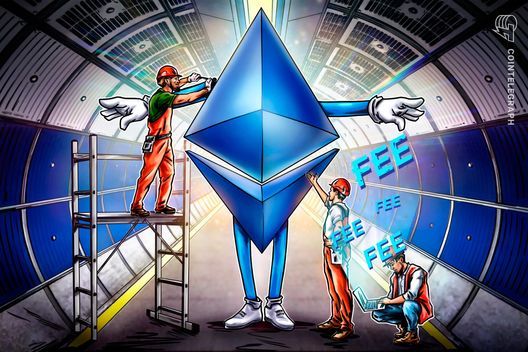Ethereum raises block gas limit to 60M as network capacity climbs ahead of Fusaka

Analysis
Price Impact
HighThe increase in ethereum's block gas limit to 60m significantly boosts network capacity, allowing for more transactions per block. this can ease congestion, potentially lower transaction fees, and improve overall network efficiency, making ethereum more attractive for users and developers.
Trustworthiness
HighThe news is directly supported by on-chain data (gas limit pics), confirmed by ethereum co-founder vitalik buterin, and actively pushed by core developers and over 513,000 validators. it's a fundamental network change, not speculative news.
Price Direction
BullishEnhanced scalability and reduced potential for high fees make ethereum a more robust and appealing platform. this increased utility and efficiency are strong fundamentals that tend to drive demand and a positive sentiment for eth.
Time Effect
LongThis is a foundational improvement to ethereum's base layer and a precursor to further scalability upgrades like fusaka. the benefits of increased throughput and lower fees will accrue over time, supporting sustained network growth and adoption.
Original Article:
Article Content:
Ezra Reguerra 2 minutes ago Ethereum raises block gas limit to 60M as network capacity climbs ahead of Fusaka Ethereum co-founder Vitalik Buterin expects growth to continue next year, but with smarter adjustments that expand capacity without new bottlenecks. Listen 0:00 12 News COINTELEGRAPH IN YOUR SOCIAL FEED Ethereum crossed a new threshold in execution capacity as its mainnet block gas limit reached 60 million, the highest level the network has seen in four years. Data tracker Gas Limit Pics showed that in November, over 513,000 validators signaled a 60 million gas limit, pushing the Ethereum network over the threshold needed for the protocol to begin drifting the gas limit upward. A higher gas limit allows Ethereum to fit more work into each block, including swaps, token transfers and smart contract calls. In practice, that can ease congestion during busy periods and help the network process more activity at the base layer. As more than 513,000 validators transitioned from the 45 million ceiling to the higher 60 million configuration, Ethereum’s effective block size began to increase automatically, thereby raising the throughput across the network’s base layer. Over half a million validators signal a gas limit of 60 million. Source: GasLimit.Pics The effort to “pump the gas” on Ethereum In March 2024, Ethereum developers initiated an effort to increase the network’s gas limit, claiming that the change can help scale Ethereum. Ethereum developers Eric Connor and Mariano Conti created an initiative called Pump The Gas to raise the Ethereum gas limit, which they said would reduce the transaction fees on the layer-1 blockchain. The duo called on solo stakers, client teams, pools and community members to push the agenda. In December 2024, the movement gained momentum as validators started signaling an increase in gas limits. The community rallied to increase the maximum amount of gas allowed for transactions to be included in a single Ethereum block. The gas limit increase comes ahead of an upcoming major network upgrade , called Fusaka, that aims to improve Ethereum’s scalability. On Oct. 29, the upgrade made its way into the Hoodi testnet, the final step before its mainnet debut on Dec. 3. Related: Buterin donates to 2 projects pushing ‘next steps’ of digital privacy Ethereum community says the 60 million gas limit is “only the beginning” Ethereum leaders say the jump to a 60 million gas limit is just the start of a broader expansion of the network’s execution capacity. Ethereum Foundation researcher Toni Wahrstätter credited teams, researchers and ecosystem contributors for coordinating the push. “Just a year after the community started pushing for higher gas limits, Ethereum is now running with a 60M block gas limit. That’s a 2× increase in a single year — and it’s only the beginning,” Wahrstätter wrote on X. Source: Vitalik Buterin Ethereum co-founder Vitalik Buterin echoed the sentiment. He said that the network can expect continued growth over the next year. However, this would be in a more targeted and less uniform way. He floated a future where the network increases overall capacity while making certain inefficient operations more expensive. He also pointed toward a more refined form of scaling, which involves larger blocks but smarter pricing to ensure that the network can expand safely without introducing new problems. Magazine: Ethereum’s Fusaka fork explained for dummies: What the hell is PeerDAS? # Blockchain # Cryptocurrencies # Ethereum # Vitalik Buterin # Upgrade # Validator Add reaction